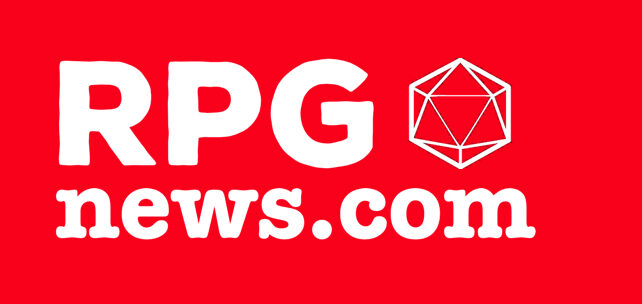By Nathan Dowdell, 2d20 System Developer
Art by Matheus Graef
Every gamemaster has their own approach, their own practices, and their own habits when it comes to running a game, and while there’s no one right way to run Star Trek Adventures, it’s sometimes useful to consider other approaches and see how others do it. So, for this week’s blog, I’m going to go over my routine ‘toolkit’ for running a game (specifically, in-person) and see if maybe some of my approaches might help you.
- CORE RULEBOOK: Obviously, I bring the game’s rules to any game I’m running. My collector’s edition of the game (Operations red—Jim Johnson’s the one in charge; I’m the one tinkering with mechanisms in the engine room) stays at home, but my standard edition sits on the table, where my players can reach it. I’ll have the PDF open on my laptop as well for my own reference.
- GAME TOOLKIT: The Game Toolkit is useful too, but at my table less for the gamemaster screen and more for the summary sheets. I don’t like using screens—I prefer not to have that barrier between me and the players, partly because it means I can reach the Momentum and Threat tokens in the middle of the table. The summary sheets and the toolkit booklet are very useful, though: the former for quick reference, especially if the ship gets into a fight, and the latter because it has a selection of useful little mechanics.
- LAPTOP: I keep all my notes and plans and reference material on my laptop, as it’s the same computer I use for working on the game, and everything is on there. I also make use of it for searching things online to give my players visual references and to look up obscure information that becomes relevant during the session. I also keep a tab on TrekCore.com, as they have a great audio library of Star Trek sounds which I can play during the session for moments like communicators chirping, using the transporters, red alerts, and the like. I’ve run for many groups, and they always get a kick out of the sounds.
- PENCIL AND PAPER: I’m not completely digital. Paper and pencils for quick sketch maps, diagrams, and notes are useful at any table. I’ll also have printouts of anything that’s useful for me to reference in play, such as specific NPCs or ships I’ve created, so I can scrawl damage and other effects on the page. I also print out the Technobabble tables from the core rulebook, because they’re fun and handy for my players to have.
- DICE: My typical Star Trek Adventures dice bag has 24 d20s in it, eight each of red, yellow, and blue. I bought five of each when we started playtesting first edition and obtained some official ones when the game was first released, and dice don’t stop working suddenly, so they’re still in use. I’ve run a lot of demo games, so I always bring more dice than I need because players might need some.
- TOKENS: I own the old acrylic tokens released with the Borg Cube boxed set from first edition, but I generally use full-sized ceramic poker chips for tokens in my game, as I prefer the size and weight of them when I’m handing out Momentum or Determination, or the sound they make when I add a few extra Threat to the pile.
- DRY-WIPE INDEX CARDS AND WHITEBOARD MARKERS: My secret weapon. Laminated dry-erase index cards (6” by 4”) and a pack of markers make quick notes, small diagrams, and changeable information at the table extremely easy. I always start each session with one, marked with the episode title, the stardate, and the Directives for the adventure, and I’ll hand out ones marked with traits during play: beneficial traits written in blue, complications written in red. Even in demos, where I’m not explaining the whole game, handing out a card marked Engineering Team or Ambush Tactics tells new players that this is A Thing and they can do stuff with it, while a card with big red letters saying Ruptured Plasma Conduit or Grazed by a Disruptor tells them that this is Something Bad. Nice, clear reminders. As a further benefit, a few of them together can make great combat maps, with each card representing one zone: write the zone name/description on each, or even doodle a quick diagram, maybe one or two location traits too, and then arrange them appropriately, and you’ve got a map in maybe 30 seconds. If there are any vital notes I need to keep, I’ll take a photo on my phone and send it to my computer where it can go into my notes.
- SUPPORTING CHARACTERS: I print a small pile of blank supporting character sheets on regular index cards, along with the basic instructions for creating a new supporting character, and leave them in the middle of the table. Whenever a player wants a supporting character, they grab one from the stack—existing or brand new—and fill it in themselves; no need for me to open the book and explain it. It also helps make the players feel like the supporting characters are theirs, rather than being NPCs under my control.
I don’t generally need more than that. Indeed, my session prep for Star Trek Adventures games is fairly light: I’ll pretty much just sketch out a rough episode premise with an immediate problem, and maybe a twist or unexpected complication to drop during Act 2, and then I let the players devise a solution. I’m very much an improv sort of gamemaster, especially with settings I know extremely well.
So, that’s what I use to gamemaster. What gamemaster tools do you use with your games? If you’re a player, what tools does your gamemaster use to enhance gameplay? Share your ideas and insights with your fellow fans at the official Modiphius Discord!
Thanks for reading this article, and thank you for your interest and support of Star Trek Adventures! Keep frequencies open for news about other upcoming Star Trek Adventures product releases. Live long and prosper!
TM & © 2025 CBS Studios Inc. © 2025 Paramount Pictures Corp. STAR TREK and related marks and logos are trademarks of CBS Studios Inc. All Rights Reserved.

Read more at this site
